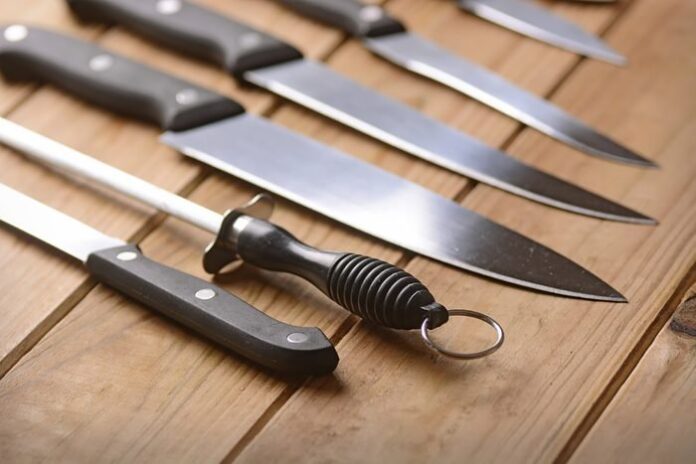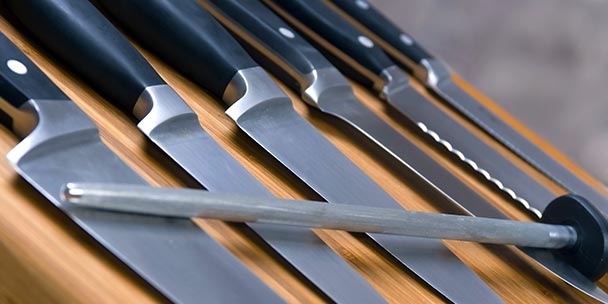A kitchen knife is an essential element of any kitchen, and no one wants to find themselves in a situation where they cannot use it properly. While there are different knives, you’ll need to know the main types for different foods and how they work to use them properly.
A perfect kitchen knife helps a lot with cooking. However, an imperfect kitchen knife can hamper your cooking performance. And it isn’t easy to choose the right kitchen knife because there are a lot out there.
To keep that in mind, in this article, I will guide you in choosing the right kitchen knife for you. I will discuss critical factors that you should consider while buying a kitchen knife.
So, let’s begin.
If you are in a hurry, check out Kitchenkiddo; they have a great collection of kitchen knives.
Key Factors you should consider While Choosing Your Kitchen Knife
Many things matter when it comes to choosing the right knife for the kitchen.
The type of material used, size, shape, and handle design are the most critical factors. Also, where you will be using it and how often.
Here are some key factors to consider:
- Material
- Size
- Shape
- Handle Design
Knife Material
The hardness and type of metal used to make a knife are the most important facts. There are different types of materials used to make knives, such as stainless steel, carbon steel, ceramic, or even wood.
Stainless steel is the most common material for kitchen knives because it is easy to maintain and sharpen with a metal file or whetstone. It can also resist corrosion due to its chromium, nickel, and molybdenum composition, which prevents discoloration. Stainless steel is the strongest, most resilient material for blade products. High-end cookware uses this material which gives cooks unparalleled longevity with their knives and samurai swords alike!
Carbon steel is made up of iron with small amounts of carbon mixed, making it more difficult to sharpen but easier to maintain since it does not rust easily. Carbon steels have edge retention that lasts longer than stainless steel, so they are better suited for heavier-duty tasks like chopping vegetables.
Ceramic blades are created by melting fine clay into a mold then using heat-resistant glass or resin as a binder which hardens into the blade shape when cooled. Ceramic blades have good edge retention but require more maintenance because they cannot be sharpened without breaking the blade itself, while some say ceramic blades are brittle compared to other types of knives.
Knife Size
What is the right size for the kitchen knife?
To answer this question, we need to understand the types of knives available in the market. Knives come in different sizes, such as 8 inches, 10 inches, 12 inches, and more.
The most common kitchen knife is a chef’s knife, approximately 8 inches long and weighs about 3 pounds. The blade has a sharp edge on one side and a rounded edge on the other side for cutting purposes.
Another type of kitchen knife is a utility knife that is 6-7 inches long that can be used for cutting, scraping, and trimming. It also has serrated edges for sawing through food such as vegetables or cheese.
Finally, paring knives are 4-5 inches long with thin blades designed to cut small items like fruit or vegetables without damaging them.
Knife Shape
The most common knife shapes are straight, curved edge, and serrated edge.
Knives with straight edges are the best when you need to slice something thin, like cheese or cake.
A curved edge would be better for cutting softer foods like tomatoes and vegetables.
A serrated edge is good for slicing bread or harder fruits and vegetables with thick skin around them. Serrated edges also work well when there is lots of food sticking to the blade.
Knife Handle
Knife handles come in many shapes and sizes, but some are better than others. The shape of the handle is important because it will determine grip comfortability while cutting food.
Here are some of the most common knife handle designs:
– Round: These are typically used for cooking, especially on non-stick cookware like Teflon or ceramic. They allow you to easily move your fingers around the blade while maintaining a firm grip on the knife.
– Straight: These knives offer an increased surface area that allows for easier gripping with your hand while cooking on stovetop grates, cast iron skillets, and frying pans.
– Serrated: These knives have serrations at one end of the blade that help grip food when cutting by increasing friction between the blade and food without slipping off.
Final Words
A knife is a must-have item for the kitchen. It also serves various purposes in our daily lives. For example, you can use it for food preparation and cooking. Moreover, you can also use it for all sorts of other tasks that require precision and strength. When choosing the right knife for your needs, you need to consider its building material and overall shape and size.



















